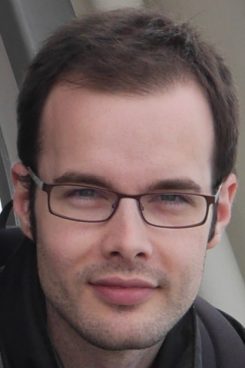Mathematics lecturer wins Gábor Szegö Prize
Mathematics Lecturer Dr Thomas Bothner has recently received the Gábor Szegö Prize which is awarded by the Society for Industrial and Applied Mathematics every two years to ‘one individual in their early career for outstanding research contributions in the area of orthogonal polynomials and special functions’.
We asked Thomas about his research at King’s and what it means to win this prize.
What is your area of research?
I am a member of King’s College London’s Department of Mathematics working in mathematical physics. This is a hybrid discipline where we look at real-world physical phenomena and try to understand them with rigorous mathematics.
What inspires you to work in this area?
I started as a physicist and was always fascinated to see mathematics helping us understand nature. Still, there is a big methodological difference between researchers in physics and mathematics. And sure enough, over time, the lure of pure logical deductions in maths took over my initial outset and I switched to mathematics. However, I did not forget my beginnings and most of my work today follows the same guiding principle: can I use my pure mathematics skills and help understand a topic in physics which was out of reach beforehand? Mathematical physics is a prime source for such topics.
What were you nominated for?
I was nominated for the Gábor Szegö Prize, an award given every two years (since 2011) to an early career mathematician in the field of orthogonal polynomials and special functions. It is named after the Hungarian mathematician Gábor Szegö who was a giant in this field; sadly the Nazis forced him out of Europe and he had to relocate to the US. There, among many other things, he helped Stanford to establish a world class math department.
What are orthogonal polynomials and special functions? Why are they important?
Let’s begin with special functions, defined by Encyclopædia Britannica as: ‘Any class of mathematical functions that arise in the solution of various classical problems of physics’. As an example: take a rectangular sheet of paper and role it into a cylinder. Now grab a pair of scissors and cut through the cylinder obliquely, afterwards unroll both cut pieces. One side of each piece will look like a wave, which is actually the graph of a special function. The same special function which is used in the modelling of water or sound waves! This is just one example, many, many, others arise in various areas of pure and applied mathematics.
Orthogonal polynomials are a class of special functions that were first singled out towards the end of the 19th century - foremost in the Russian empire thanks to Pafnuty Chebyshev (who is my academic great-great-great-great-great-grandfather). Their applicability is far reaching: for example, some models in quantum mechanics are exactly solved in terms of orthogonal polynomials, other models in fluid dynamics and electrodynamics need them, too; they are used in computer software that evaluates integrals, in approximation theory, random matrix theory, integrable systems, etc...
What is being done with this data? What next? What will this allow us to do? How will this affect our day to day lives?
I will focus on one topic that benefitted from the results for which I received the Gábor Szegö Prize: If you were to go back to the paper above, pick a piece and hold one of its sides over a small flame (don’t try this at home), you would see the fire eating its way through the paper, but mathematically you would actually be witnessing a so-called slow combustion front that somewhat randomly spreads out over the unburnt paper. Turns out, mathematicians had cooked up a model for the statistical fluctuations of such interface growth models in the mid-1980s, known as the Kardar-Parisi-Zhang (KPZ) equation. This iconic equation presented mathematicians with serious challenges over the past 30 years, some of which were resolved by Martin Hairer from Imperial College London who was in turn awarded the Fields Medal back in 2014 for his outstanding contributions. My own results are much more modest: they helped people working on stochastic partial differential equations and in probability theory to uncover and understand previously unknown properties of solutions to the KPZ equation. Returning to the burning paper, in some sense, we now have a better understanding of the spread of certain fire lines.
In retrospective I realised that my work merely scratched the surface of what analysts (such as myself) can provide for researchers in KPZ theory. My near-term goal is thus to further refine and sharpen the tools used in the analysis of orthogonal polynomials and special functions in order to uncover even more mysteries related to the KPZ equation and in other areas of mathematics or physics.
How do you feel about winning the Gábor Szegö Prize?
I was very excited and happy to learn about the aforementioned applications of my results in the KPZ context back in early 2018. This came to me as an unexpected but still most welcome surprise, after all that’s the kind of result I had hoped to provide for my colleagues. Receiving now the Gábor Szegö Prize is the cherry on top - it is such a great honour and distinction to be nominated in the first place and now to actually get it, wow! I am a junior person in the field and such a distinction will serve as major motivational boost for my upcoming research.